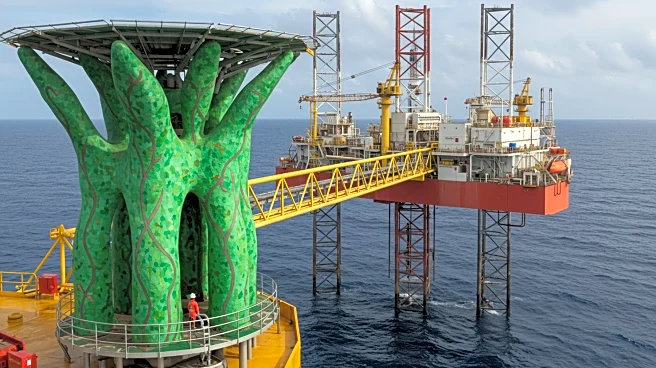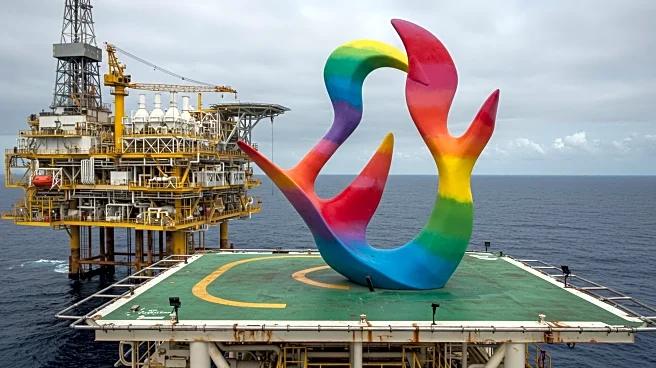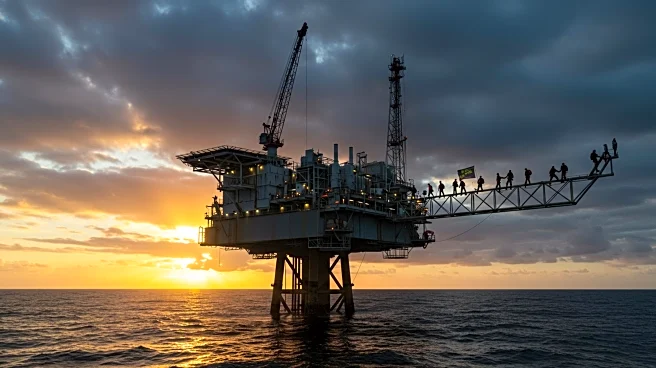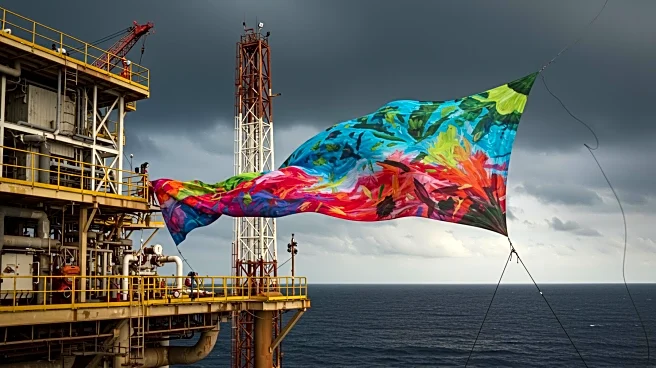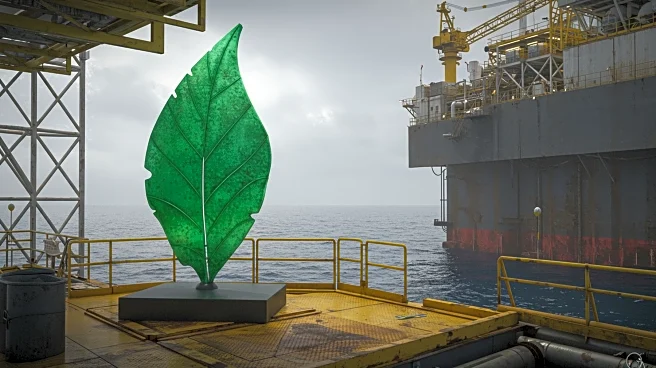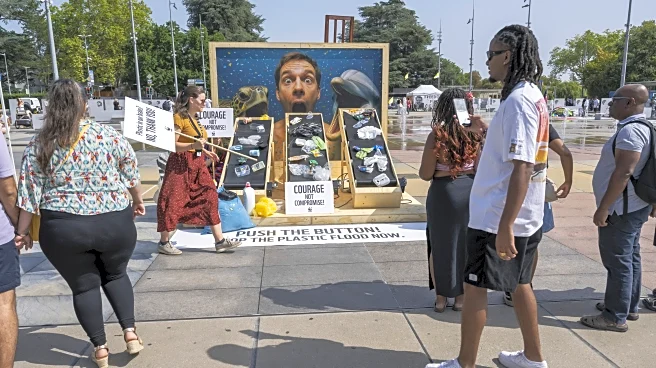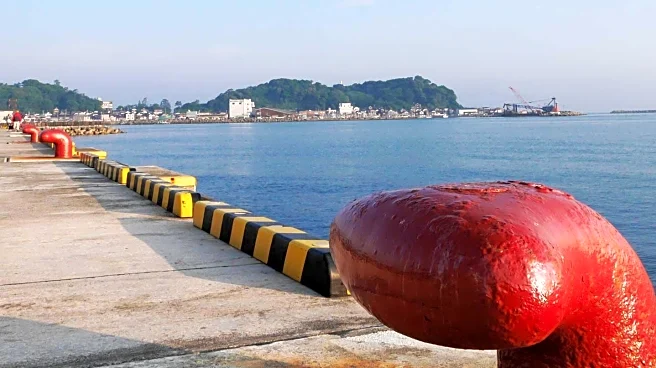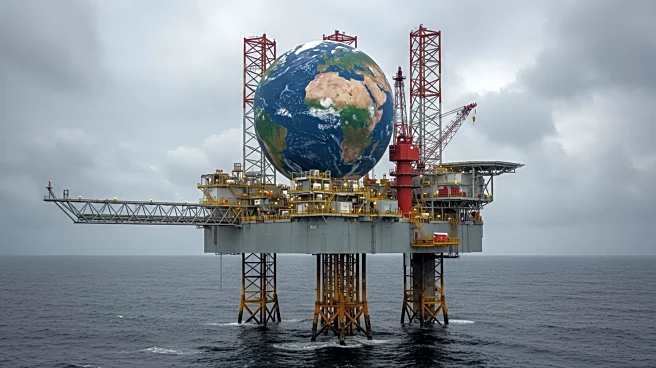What's Happening?
Greenpeace activists have executed a dramatic art installation on a Shell-operated gas rig in the North Sea, featuring a 1,000-square-foot canvas sprayed with a blood-red liquid. The artwork, designed by British artist Anish Kapoor, is titled 'Butchered' and aims to highlight the destructive impact of the fossil fuel industry on humanity and the planet. The installation was carried out by a crew of seven aboard Greenpeace's Arctic Sunrise vessel, marking the first time an artwork has been installed at an active offshore gas site. Kapoor's work is intended as a visceral representation of the climate crisis, particularly affecting marginalized communities globally. This action follows a failed attempt last year and coincides with the U.K.'s fourth heatwave of the summer, which has led to droughts and wildfires.
Why It's Important?
The installation underscores the ongoing debate over the environmental impact of fossil fuels and the role of major corporations like Shell in climate change. Greenpeace's action draws attention to the profits made by the fossil fuel industry, which contrast sharply with the environmental and societal costs borne by ordinary people. The protest highlights the urgency of addressing climate change, as evidenced by the U.K.'s recent heatwaves and their consequences. By using art as a medium, Greenpeace and Kapoor aim to provoke public discourse and pressure policymakers to reconsider the reliance on fossil fuels and invest in sustainable alternatives.
What's Next?
Greenpeace's protest may prompt further scrutiny of Shell's operations and its environmental policies. The action could lead to increased calls for regulatory changes and more aggressive climate action from governments and corporations. As public awareness grows, there may be heightened pressure on the fossil fuel industry to transition towards cleaner energy sources. Additionally, similar art-related protests could emerge as a powerful tool for environmental advocacy, influencing public opinion and policy decisions.
Beyond the Headlines
The use of art in environmental activism raises questions about the effectiveness of non-traditional protest methods in driving change. Kapoor's collaboration with Greenpeace reflects a growing trend of artists engaging with social and political issues, using their platforms to amplify critical messages. This approach may inspire other artists to explore creative ways to address global challenges, potentially leading to a broader cultural shift towards environmental consciousness.
